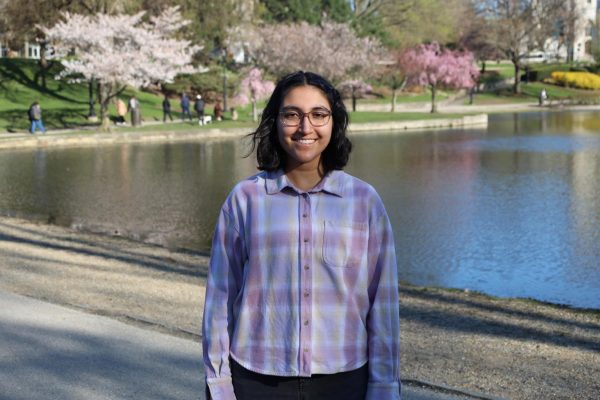Agarwal: The mess of COVID-19 vaccine distribution
Why wealthy countries need to take charge
October 8, 2021
Nearly half of the world’s population has received at least one dose of a COVID-19 vaccine: an impressive feat, considering the pandemic began less than two years ago and has claimed 4.5 million lives since then. However, when this percentage is put into perspective, underlying inequalities are made apparent; 77% of the shots have been administered in high- and upper-middle-income countries, while only 0.5% have been administered in low-income countries.
In June, to bridge this inequality, the Group of Seven (G7), an intergovernmental organization consisting of Canada, France, Germany, Italy, Japan, the United Kingdom and the United States, pledged to donate one billion doses of COVID-19 vaccines to developing countries. They aim to send out all of these vaccines over the course of a year, with at least half of those doses delivered by the end of 2021. Yet, with less than three months left in 2021, the world’s largest economies are not even halfway to 500 million doses donated. Instead, the G7 and other wealthy countries have begun rolling out booster shots amidst fears of the Delta variant and waning immunity in their own populations. Ironically, by neglecting countries other than their own, wealthy countries are ensuring that COVID-19 continues to spread throughout the world, thus increasing the likelihood of more transmissible and deadlier variants emerging, perhaps even dispersing to their countries and evading vaccines.
It is undeniable that booster shots are necessary after getting fully vaccinated; studies have shown that as time goes on, COVID-19 antibody levels decline. Furthermore, the Delta variant partially avoids neutralization by the vaccine antibodies, so it is more imperative than ever to maintain antibody levels in the bloodstream. However, it is also clear that until the entire world reaches herd immunity through vaccinations or previous infections, COVID-19 will continue to circulate and evolve. Hence, the issue arises of to whom vaccines should be given first: a rich country’s vaccinated citizens or a poor country’s unvaccinated citizens?
The answer is simple; administering the vaccine to the world’s unvaccinated inhabitants should be prioritized. It is unmistakably unjust for those already protected against COVID-19 to be dually protected while 99.5% of those in low-income countries await their first dose. Disregarding morality, the answer is still the same; after all, herd immunity is the only way to eradicate the threat of COVID-19 from all countries. While booster shots will protect a specific populace for some time, without a fully vaccinated world, more transmissible and deadlier variants will eventually arise and evade the vaccine with greater success than before. This leads us back to square one: administering booster shots and creating vaccines specific to that variant.
However, the answer cannot be one or the other. It should be within the reach of wealthier countries to administer the vaccine to both the world’s vaccinated and unvaccinated populations at a critical rate. It would surely be the ideal outcome for everyone. Yet high-income countries seem to be devoting more of their resources to delivering booster vaccines rather than splitting their attention equally between their country and the world. After all, the virus does not stop at country borders. And as a consequence of these countries’ selfishness, vaccines are wasted.
For example, the G7, including the U.S., has bought over one-third of the world’s vaccine supply, despite only representing 13% of the world’s population. And since March 2021, 15 million COVID-19 vaccine doses have been discarded in the U.S., which began offering booster shots last month. Those 15 million doses could have been donated to low-income countries rather than meeting their expiry date in an overstocked pharmacy. Had the U.S.’ stockpile of vaccines been distributed more evenly between itself and low-income countries, as many as 7.5 million people could have been vaccinated against COVID-19, and the U.S. would be closer to reaching its goal of donating 580 million doses.
High-income countries like the U.S. need to help equitably distribute COVID-19 vaccines across the globe promptly. To do so, they need to actively participate in and, further, bolster international initiatives, such as COVAX—which aims to equally distribute and administer the vaccines among low-income countries—as well as stop stockpiling doses and, instead, fulfill their promises. For example, the described objectives could be met by donating significant numbers of the vaccines much before their expiry date to COVAX, promoting vaccination in low-income countries, and supplying trained workers to assist in administering the shots. To further help with high-income countries’ vaccine distribution, pharmaceutical companies need to increase their production of the vaccines and stay at their maximum production levels; after all, the faster the world is vaccinated, the quicker COVID-19’s threat is diminished. The distribution of booster shots would continue as COVID-19 immunity wears off, though potentially at a slower rate to balance administering booster shots with redistributing the vaccines.
Once the COVID-19 vaccines are distributed and administered equitably to everyone, the end of the pandemic will be in sight, regardless of whether COVID-19 disappears completely or becomes epidemic. The world will have reached herd immunity, the threat will have been eradicated and everyone will have begun to return to normalcy. Hopefully, high-income countries realize the importance of equal vaccine distribution and take the lead before it is too late.


